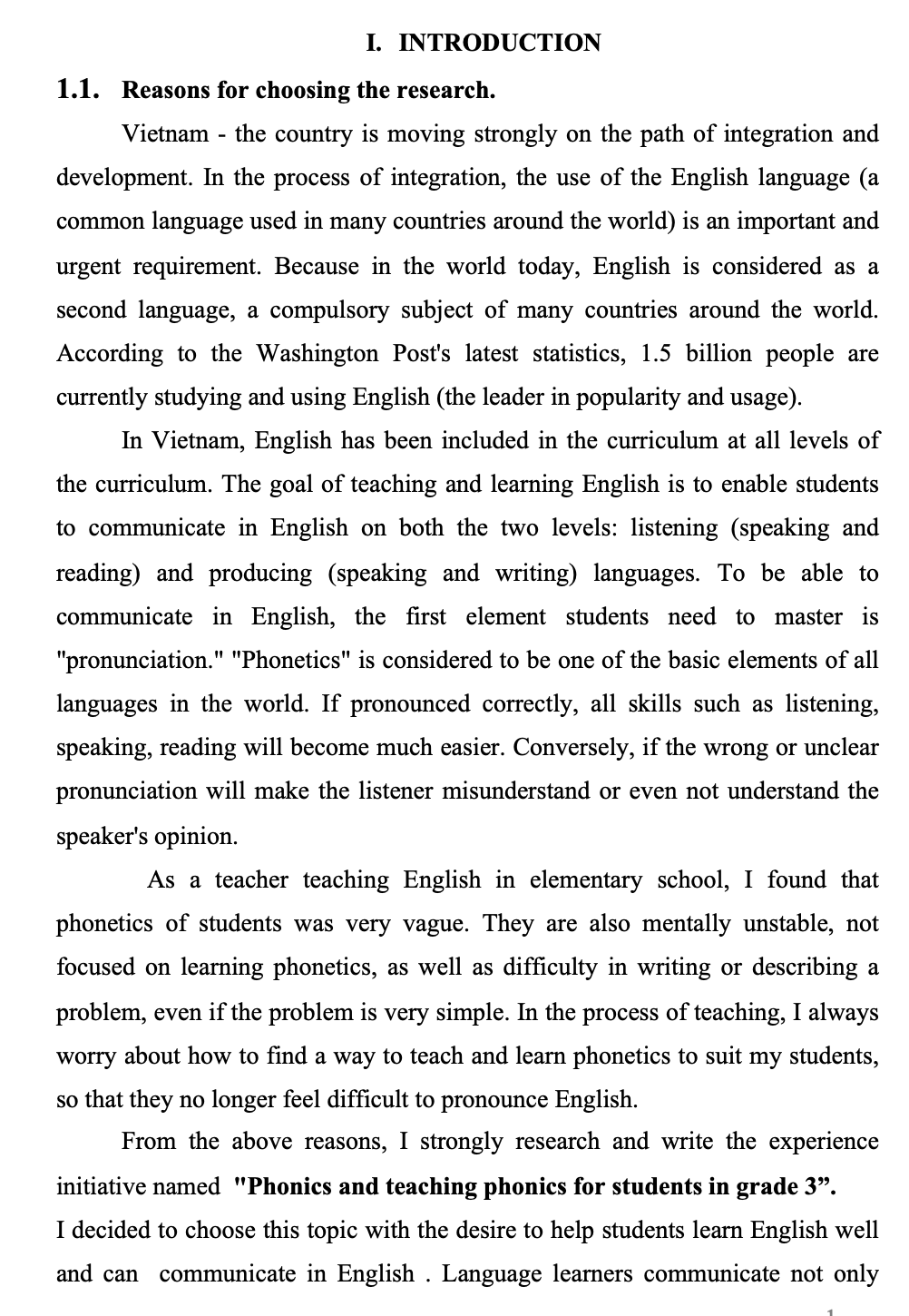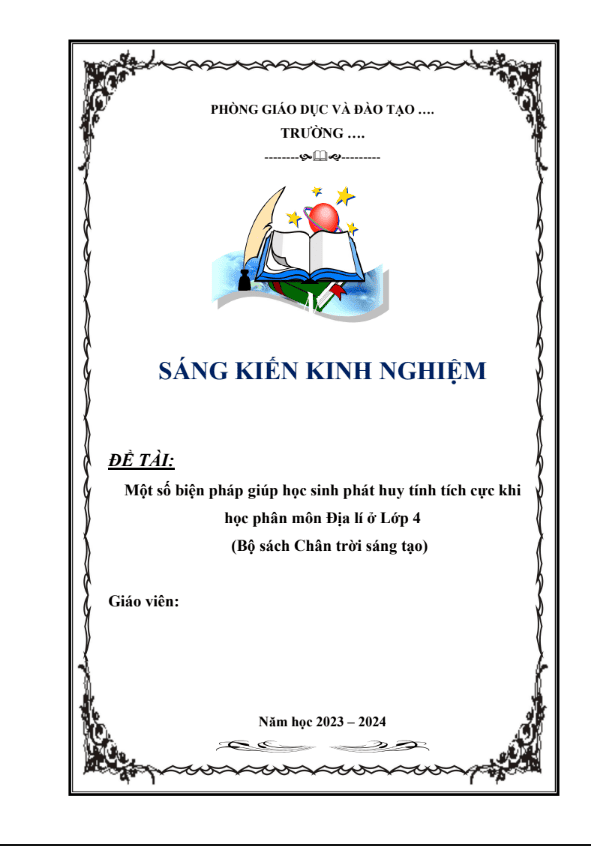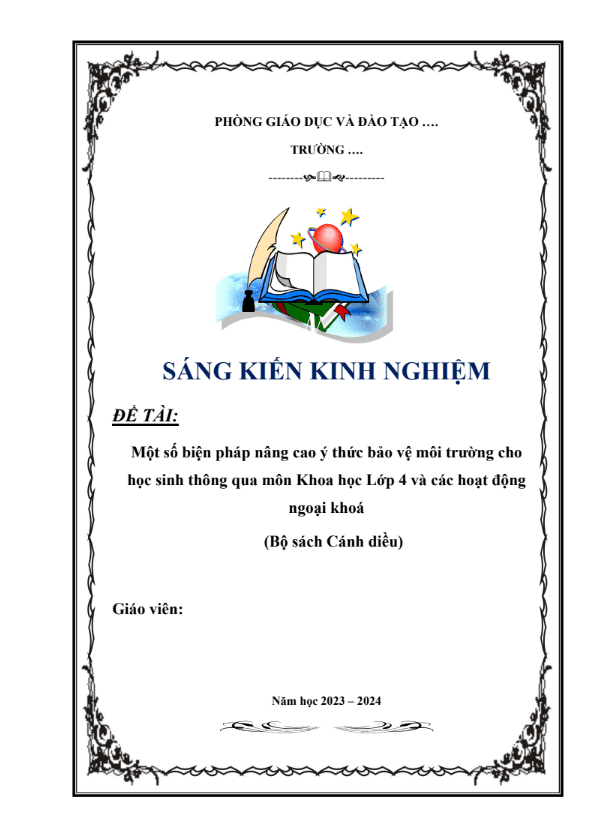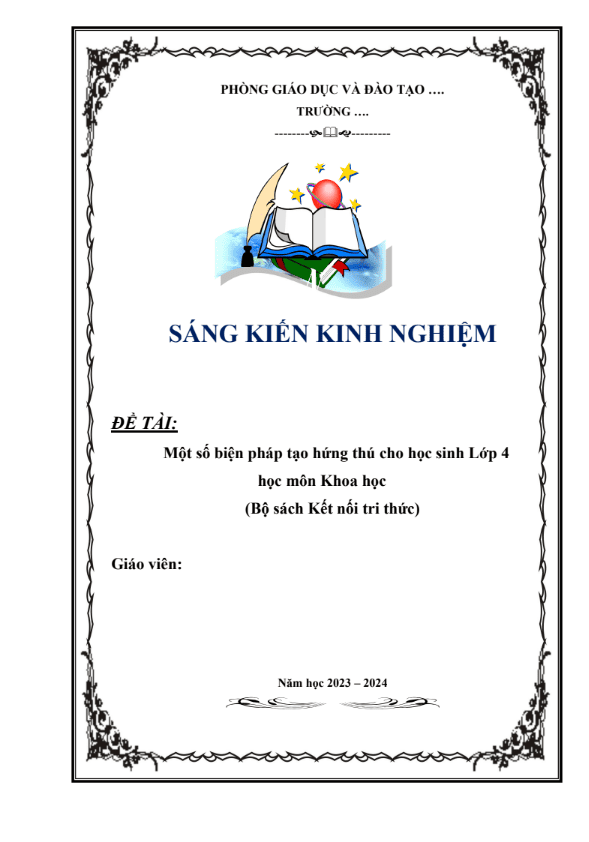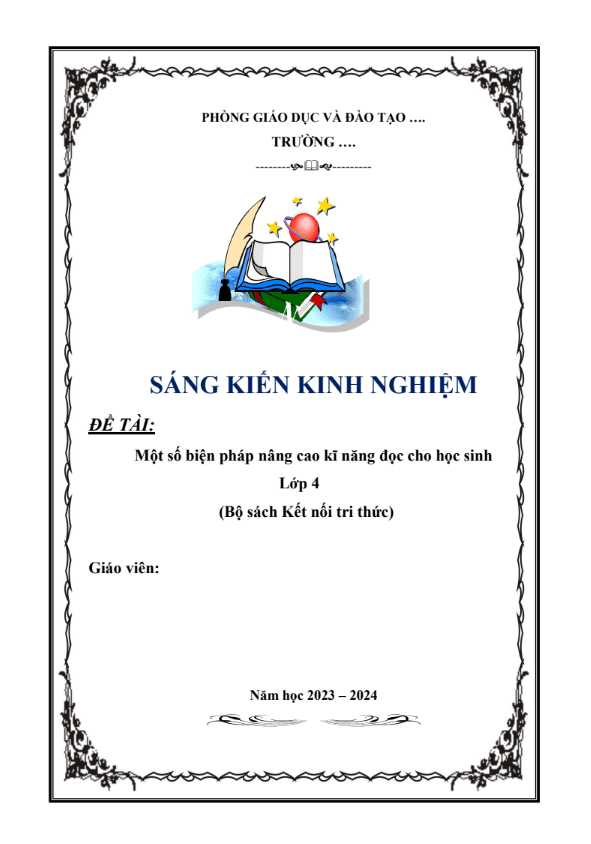SKKN Phonics and teaching phonics for students in grade 3
- Mã tài liệu: BM3043 Copy
| Môn: | Tiếng anh |
| Lớp: | 3 |
| Bộ sách: | |
| Lượt xem: | 427 |
| Lượt tải: | 7 |
| Số trang: | 24 |
| Tác giả: | Đặng Thị Bảo Châu |
| Trình độ chuyên môn: | Thạc sĩ giáo dục |
| Đơn vị công tác: | Trường Tiểu học Nguyễn Tất Thành |
| Năm viết: | 2020-2021 |
| Số trang: | 24 |
| Tác giả: | Đặng Thị Bảo Châu |
| Trình độ chuyên môn: | Thạc sĩ giáo dục |
| Đơn vị công tác: | Trường Tiểu học Nguyễn Tất Thành |
| Năm viết: | 2020-2021 |
Sáng kiến kinh nghiệm “SKKN Phonics and teaching phonics for students in grade 3” triển khai gồm các biện pháp nổi bật sau:
In English language, There are twenty vowels and twenty four consonants sound, which we put together to form words. Some are represented by one letter, like ‘t’, and some by two or more , like ‘ck’ in duck and ‘air’ in chair.Children are taught the sounds first, then how to match them to letters, and finally how to use the letter sounds for reading and spelling . Synthetic phonics refers to ‘synthesising’, or blending, the sounds to read words. It’s based on the idea that children should sound out unknown words and not rely on their context. Now I specifically refer to each sound in English and use them to the lessons which are applied for students in grade three.
Mô tả sản phẩm
- INTRODUCTION
- Reasons for choosing the research.
Vietnam – the country is moving strongly on the path of integration and development. In the process of integration, the use of the English language (a common language used in many countries around the world) is an important and urgent requirement. Because in the world today, English is considered as a second language, a compulsory subject of many countries around the world. According to the Washington Post’s latest statistics, 1.5 billion people are currently studying and using English (the leader in popularity and usage).
In Vietnam, English has been included in the curriculum at all levels of the curriculum. The goal of teaching and learning English is to enable students to communicate in English on both the two levels: listening (speaking and reading) and producing (speaking and writing) languages. To be able to communicate in English, the first element students need to master is “pronunciation.” “Phonetics” is considered to be one of the basic elements of all languages in the world. If pronounced correctly, all skills such as listening, speaking, reading will become much easier. Conversely, if the wrong or unclear pronunciation will make the listener misunderstand or even not understand the speaker’s opinion.
As a teacher teaching English in elementary school, I found that phonetics of students was very vague. They are also mentally unstable, not focused on learning phonetics, as well as difficulty in writing or describing a problem, even if the problem is very simple. In the process of teaching, I always worry about how to find a way to teach and learn phonetics to suit my students, so that they no longer feel difficult to pronounce English.
From the above reasons, I strongly research and write the experience initiative named “Phonics and teaching phonics for students in grade 3”.
I decided to choose this topic with the desire to help students learn English well and can communicate in English . Language learners communicate not only corectly but also self confidently in lessons . This is more excited than they are willing to learn in order to improve their English pronunciation.
- Purpose of research.
Find the methods to teach phonics for students in grade 3.
- Subjects of research.
Research some solutions to teach phonics better for students in grade 3.
- Methods of research.
– Research methods to build the theoretical basis.
– Method of surveying practice, collecting information.
– Statistical methods for data processing.
– Summary methods to draw on experience.
- CONTENT
2.1. The theoretical basis of the subject.
2.1.1. Phonetic concept
Phonetics is the sound of human speech or the sound of language. Phonetics consists of intonation and sound.
Phonetics in English can be understood to include phonology, stress, rhythm and intonation. According to the study of phonetics, the most successful communication process is achieved through four criteria: good pronunciation; Natural speech; Natural Rhythm; And natural intonation (natural intonation).
2.1.2. The role of teaching and learning phonetics in English
Nowadays in Vietnam, learning one or more foreign languages to use in everyday communication as well as in work has become very important, especially in English. English is used everywhere, all the time. However, the question is why many people learn English for a long time but when they interact with native speakers, they do not understand or misunderstand what we are saying. The main answer is due to phonetics in English.
Phonics teaching helps students create foreign language air, learn the correct pronunciation to a certain extent to express the content to convey the same as native speakers. Identifying the importance of phonetics in particular and subjects in general English, over the years, the Ministry of Education and Training is implementing the National Foreign Language Project 2020 (approved under Decision No. 1400 / QD-TTg Of the Prime Minister on September 30, 2008) to improve the foreign language ability of English teachers throughout the country.
2.2. Practical basis before applying theme.
The organization of teaching English in primary schools meets the needs of students in learning a foreign language elementary and accordants with the requirements of educational development . On the other hand, learning English in primary school will help students get a certain knowledge of English to be able to learn English better when they are at junior high school . Pronounciation in the general case , particularly in primary schools has long been a problem . Many students encounter new words they do not know how to pronounce . Often teachers must International Phonetic form and read to students . Sometimes the students forget how to pronounce it late. In practically, teaching at my school, I notice that some of them have the ability to read and pronounce very well .Besides, there are some children who have difficulty in pronunciation.they are afraid of the wrong director, afraid of friend’s laugh ,resultingly they are shy saying, less communicate and read the words. As well as students mispronounce, this leads to make a marked accent and intonation wrong.So to have methods of teaching reading – speaking – pronunciation well, I have conducted a survey earlier this year to classify students. The following table is the result of students in English in my school at the middle test of the first term for ……… school year
RESULT BEFORE APPLYING THE RESEARCH IN TEACHING
| Students | Excellent | good | Average | Weak (bad) | ||||
| SL | % | SL | % | SL | % | SL | % | |
| 30 | 2 | 7 | 3 | 10 | 15 | 50 | 10 | 33 |
Through this table shows the number of students pronouce the words weakly account for 33 percent .
2.3. Solution and implementation:
In English language, There are twenty vowels and twenty four consonants sound, which we put together to form words. Some are represented by one letter, like ‘t’, and some by two or more , like ‘ck’ in duck and ‘air’ in chair.Children are taught the sounds first, then how to match them to letters, and finally how to use the letter sounds for reading and spelling . Synthetic phonics refers to ‘synthesising’, or blending, the sounds to read words. It’s based on the idea that children should sound out unknown words and not rely on their context. Now I specifically refer to each sound in English and use them to the lessons which are applied for students in grade three.
TÀI LIỆU LIÊN QUAN
- 0
- 155
- 1
- [product_views]
- 6
- 163
- 2
- [product_views]
- 8
- 188
- 3
- [product_views]
- 3
- 125
- 4
- [product_views]
- 5
- 118
- 5
- [product_views]
- 8
- 110
- 6
- [product_views]
- 7
- 116
- 7
- [product_views]
- 0
- 188
- 8
- [product_views]
- 5
- 192
- 9
- [product_views]
- 1
- 187
- 10
- [product_views]

